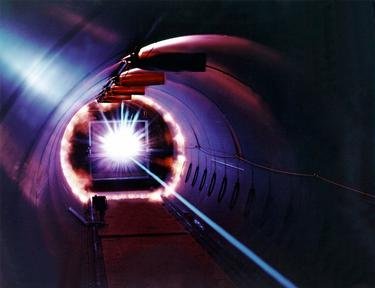21. Often seen with the up quark, its partner in the "first generation of matter", the down quark is slightly heavier and just as fun. In terms of e (the charge of a proton), what is the electric charge of a down quark?
From Quiz Quarks and Leptons
Answer:
-1/3 e
Despite what students are often taught in their courses on electricity and magnetism, there ARE fractional charges -- charges with magnitude less than an electron or proton charge! These fractional charges are carried only by quarks, elementary spin-1/2 particles that experience all four fundamental forces of nature (the strong nuclear force, the weak nuclear force, electromagnetism, and gravity). Down quarks have charge -1/3 e, while up quarks have charge +2/3 e.
But you can't find quarks by themselves, due to the mysteries of the strong nuclear force. Instead, you always find them in composite particles, which have integer charge. A proton, for example, has two ups and a down, and the total electric charge is (+2/3 e + 2/3 e - 1/3 e) = e. A neutron, with two downs and an up, has a total electric charge of 0.







 Quick Question
Quick Question A Well Rated Quiz
A Well Rated Quiz